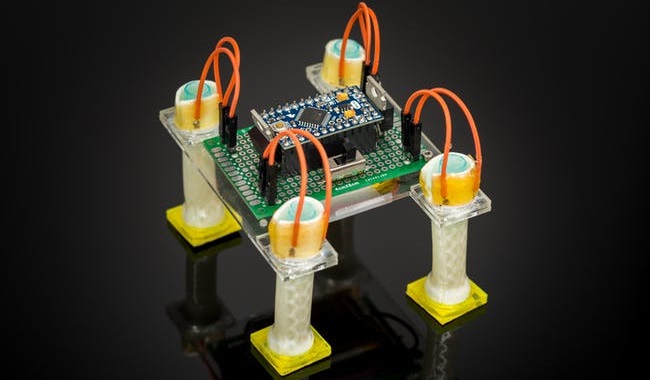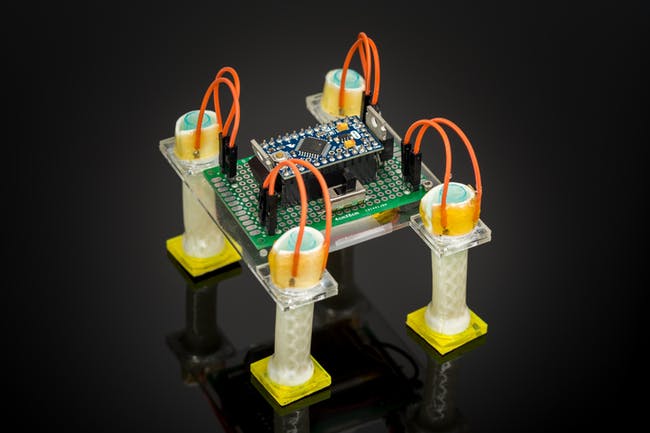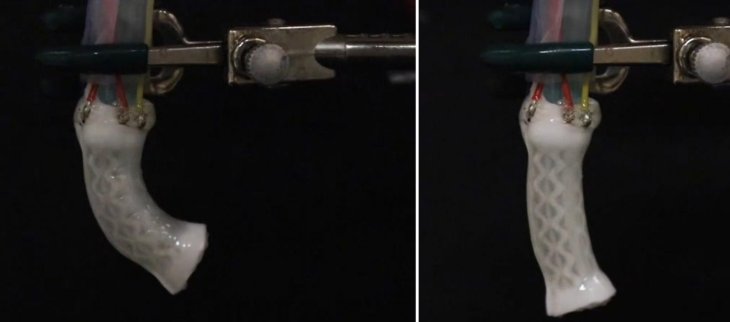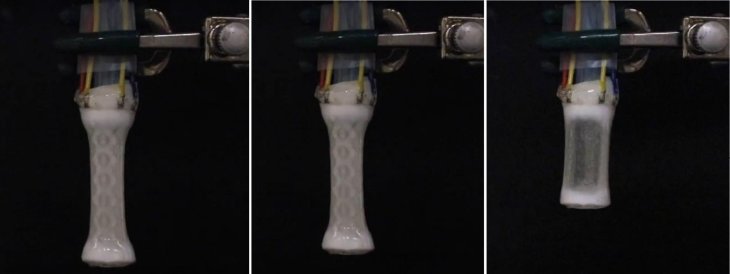These New Soft Robot Actuators Make Robots Even More Human-Like
Dhir Acharya - Oct 16, 2019

We have seen so many advances in machine learning that the robot apocalypse appears imminent, but they are still too slow to chase us down, until now.
- Cafe In Tokyo With Robot Waiters Controlled By Disabled Staff
- This $333,000 Robot Kitchen Can Cook 5,000 Recipes From Scratch
- Experts Build A Robot Hand That Smells Like A Woman For Lonely Men To Hold
We have seen so many advances in machine learning that the robot apocalypse appears imminent, but robots are still too slow and clunky to chase us down, until now. New research illustrates a proof-of-concept design for robotic limbs that are flexible and like a human muscle.
Published just last week on Science Advances, the new research describes an approach to robotic limb making in which electric heating wires are put between thin pieces of liquid crystal elastomers. Then the resulting composite is rolled into hoagie-like cylinders to create robotic fingers and limbs, called actuators.

Behind this research are scientists from the UC San Diego Jacobs School of Engineering, who applied voltage to these actuators, allowing the limbs to bend and retract similarly to the human muscles.
According to Qiguang He, the first author of this research, these robotic libs are animal-like.


This isn’t the first time we’ve seen scientists and researchers trying to build life-like robots. For example, Boston Dynamics has been constantly releasing robots with the ability to leap over obstacles, but they are heavy, encumbered due to the extra fluid or air pumps that enable them to move.
This research, on the other hand, uses just electricity to build robots that are not only life-like but also low-cost and easy to program. Shendqiang Cai, lead researcher of the study, mechanical and aerospace engineering professor, shares that since these actuators rely on electricity only, they cost less, hence far easier for reproducing.


The research team also built a robotic “hand” and an untethered robot to test how well the new creation works. Each robot came with a microcontroller applying different voltages to the muscles and created movement.

The researchers made the robot move and bend its actuator legs, making it walked for 8 centimeters while the hand formed a grip with its three actuators to grasp and lift a vial.
However, these actuators are much slower due to the extra time it takes for the heating wires to cool down and warm up to generate movement and contraction. In some trials, the wires even took around 6 minutes just to heat up. He said that cooling down might be a bigger obstacle with this invention.


To overcome the cooling down problem, the scientists have tried mimicking a biological vascular system, but that requires pumps too. So in the future, the team would need to keep working on improving time efficiency without having to sacrifice the low-cost advantages.
Featured Stories

Features - Jul 01, 2025
What Are The Fastest Passenger Vehicles Ever Created?

Features - Jun 25, 2025
Japan Hydrogen Breakthrough: Scientists Crack the Clean Energy Code with...

ICT News - Jun 25, 2025
AI Intimidation Tactics: CEOs Turn Flawed Technology Into Employee Fear Machine

Review - Jun 25, 2025
Windows 11 Problems: Is Microsoft's "Best" OS Actually Getting Worse?

Features - Jun 22, 2025
Telegram Founder Pavel Durov Plans to Split $14 Billion Fortune Among 106 Children

ICT News - Jun 22, 2025
Neuralink Telepathy Chip Enables Quadriplegic Rob Greiner to Control Games with...

Features - Jun 21, 2025
This Over $100 Bottle Has Nothing But Fresh Air Inside

Features - Jun 18, 2025
Best Mobile VPN Apps for Gaming 2025: Complete Guide

Features - Jun 18, 2025
A Math Formula Tells Us How Long Everything Will Live

Features - Jun 16, 2025
Comments
Sort by Newest | Popular